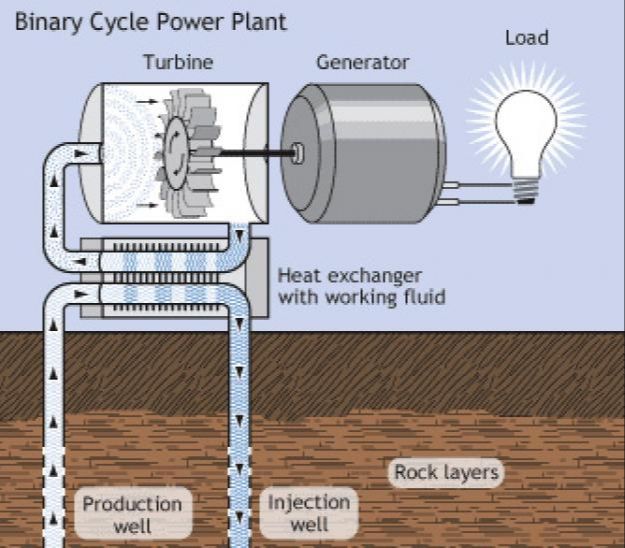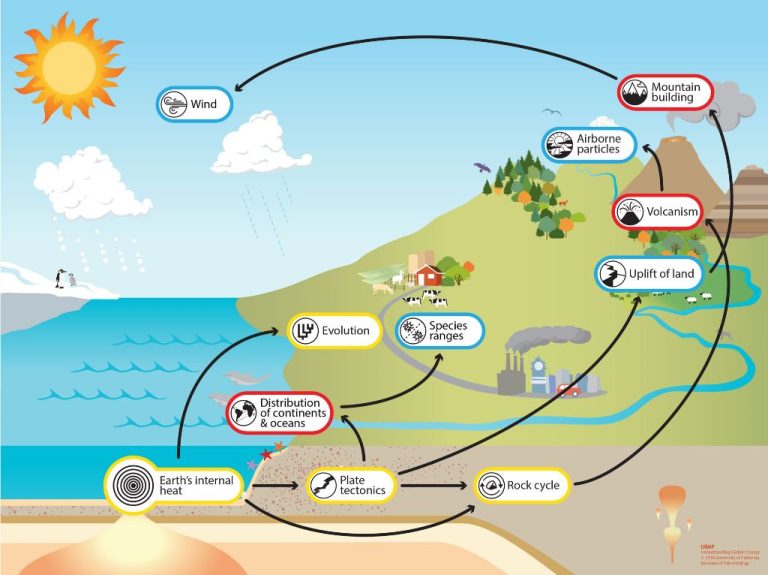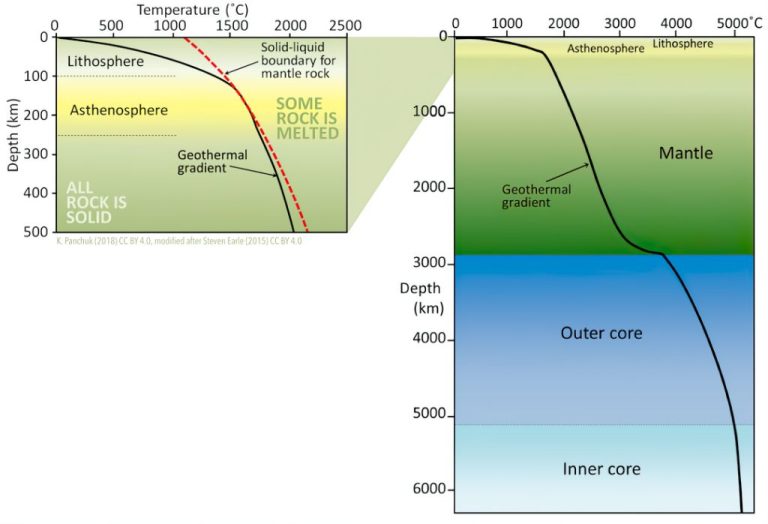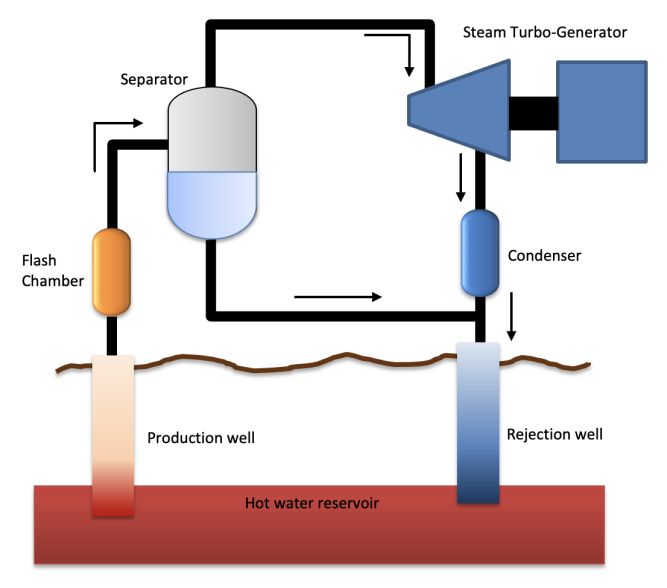How Much Electricity Can Be Generated From Geothermal Energy?

Geothermal energy is a renewable energy source that utilizes the natural heat of the earth to generate electricity and provide heating and cooling. It is defined as thermal energy generated and stored underneath the earth’s surface in the form of hot water or steam (https://www.energy.gov/eere/geothermal/geothermal-basics).
Geothermal power plants are built over geothermal reservoirs located near tectonic plate boundaries or hot spots. Wells are drilled into the reservoirs to pump up the geothermal fluids in the form of hot water or steam. The geothermal steam rotates a turbine which activates a generator to produce electricity. The hot water can also be used directly for heating applications, or passed through a heat exchanger to provide cooling (https://www.twi-global.com/technical-knowledge/faqs/geothermal-energy).
Global Geothermal Resources
Geothermal energy comes from tapping into the natural heat within the Earth’s crust, usually in the form of hot water or steam reservoirs. Major high-temperature geothermal resources capable of power generation are located along tectonic plate boundaries and fault lines where magma either rises close to the surface or heats groundwater that percolates to the surface.
According to a global estimate, around 39 countries could produce geothermal power, led by untapped potential in countries along the “Ring of Fire” in the Pacific such as Indonesia and the Philippines. Other geothermal rich locations include the Rift Valley in Africa, Iceland, New Zealand, Central America, and the western United States.
Estimates for global geothermal resource potential vary, but generally range from 200 gigawatts (GW) to 2,000 GW including identified hydrothermal resources and untapped enhanced geothermal systems (EGS). The International Energy Agency (IEA) estimates 530 GW of geothermal potential in the United States alone, with another 231 GW for direct heating uses.
Technologies for Geothermal Power Generation
There are three main types of geothermal power plant technologies used for electricity generation: dry steam, flash steam, and binary cycle. According to the U.S. Department of Energy, the type of energy conversion process depends on the state of the fluid (whether steam or water) brought to the surface and its temperature ( https://www.energy.gov/eere/geothermal/electricity-generation).
In dry steam plants, steam from geothermal reservoirs is piped directly into turbines to generate electricity. This is the oldest and simplest geothermal power plant technology. According to the National Renewable Energy Laboratory (NREL), dry steam resources are rare and only found in certain locations (https://www.nrel.gov/research/re-geo-elec-production.html).
Flash steam plants use geothermal reservoirs of water with temperatures greater than 360°F. The hot water is sprayed into a tank held at a much lower pressure, causing some of the water to rapidly vaporize or “flash.” The resulting steam then drives a turbine, which drives a generator for electricity production. Flash steam plants are the most common geothermal power plant today.
In binary cycle power plants, geothermal water is passed through a heat exchanger, transferring heat to a separate fluid with a lower boiling point, called the working fluid. The working fluid vaporizes and drives the turbine. The water and working fluid are kept separated during the whole process, so there are minimal emissions. According to NREL, binary cycle plants are the most versatile and widely applicable geothermal technology.
Installed Geothermal Power Capacity
As of 2022, the total installed geothermal power capacity worldwide was approximately 16,127 megawatts (MW), according to ThinkGeoEnergy. The countries with the highest installed capacity are:
- United States – 3,676 MW
- Indonesia – 2,625 MW
- Philippines – 1,916 MW
- Turkey – 1,615 MW
- New Zealand – 1,043 MW
Other countries with significant geothermal capacity include Mexico, Italy, Iceland, Japan, and Kenya. In total, geothermal power is used in around 40 countries worldwide. However, it still only accounts for around 0.5% of total global renewable energy capacity for electricity generation and heating/cooling applications, indicating room for substantial growth.
Geothermal Power Potential
According to the Department of Energy, geothermal power currently provides about 0.4% of total U.S. electricity generation. However, it has the potential to provide a substantially higher percentage. The technical potential for geothermal power generation in the U.S. is estimated to be 30,000 MW, which would be over 8 times the current installed capacity.
Globally, there is immense potential for expanded utilization of geothermal energy. According to a 2019 report by the International Renewable Energy Agency (IRENA), using conventional technologies, the global geothermal generation potential is estimated to be about 200 GW. With enhanced geothermal systems (EGS), which enable tapping geothermal energy from areas without naturally occurring hydrothermal resources, the global potential could exceed 2,000 GW.
Some countries with significant geothermal resources that could support expanded power generation include Indonesia, which currently generates about 2 GW from geothermal but has the potential for over 28 GW; the Philippines (about 1.9 GW installed but up to 7.4 GW potential); and Turkey (1.5 GW online with potential for 4 GW). Iceland and New Zealand generate 26% and 17% of their total electricity from geothermal respectively, demonstrating the potential for higher utilization in countries with substantial resources.
Cost of Geothermal Power
The levelized cost of electricity (LCOE) from geothermal power plants is competitive with other renewable energy sources. According to the Center for Sustainable Systems, geothermal electricity cost between 7.8-22.5¢ per kWh in 2016 (Center for Sustainable Systems). The global average installed cost for geothermal energy has declined from around $5,895 per kW in 2013 to $3,922 per kW in 2020 (Statista).
The cost of geothermal power generation depends on the resource temperature and depth. Higher temperature resources at shallower depths are less expensive to develop. The U.S. Department of Energy has set a goal to reduce the cost of geothermal power from enhanced geothermal systems to $40-60 per MWh by 2035, which would make it cost competitive with conventional power generation (U.S. Department of Energy).
Environmental Benefits
Geothermal energy has many environmental benefits compared to conventional fossil fuel power plants. Geothermal power plants produce significantly less emissions and pollutants. According to the U.S. Energy Information Administration, geothermal power plants emit 97% less sulfur dioxide and 99% less carbon dioxide than fossil fuel plants. This makes geothermal a clean, renewable energy source that does not contribute major greenhouse gas emissions driving climate change.
In addition, geothermal plants produce near zero emissions of other major pollutants like nitrogen oxides and particulate matter. The plants have a small physical footprint and do not require mining or drilling of fuels, reducing environmental disturbances. Overall, geothermal power generates electricity with minimal impacts to air and water quality, ecosystems, and natural landscapes compared to conventional power sources. As the world transitions to clean energy, geothermal can provide reliable base load power with greatly reduced environmental footprints.
Challenges for Geothermal
While geothermal energy has several advantages, it also faces some notable challenges:
High upfront costs – Constructing geothermal plants requires significant upfront investments, with costs ranging from $2-5 million per MW installed capacity, depending on the site location and resource depth. Drilling deep wells and installing pipelines increases capital costs.[1]
Geographic limitations – Geothermal energy is restricted to areas with adequate underground heat and fluid resources, such as near tectonic plate boundaries, hot spots, and magma chambers. Currently, geothermal development is concentrated in the western U.S., Indonesia, Philippines, and New Zealand.[2]
Managing emissions – Geothermal sites emit gases like carbon dioxide, hydrogen sulfide, ammonia, and methane. Facilities must control air pollution through scrubbing systems. There are also concerns around reinjecting geothermal fluids underground.[3]
With careful planning and technological improvements, many of the challenges facing geothermal energy can be addressed in the future.
[1] https://www.rff.org/publications/explainers/geothermal-energy-101/
[2] https://www.twi-global.com/technical-knowledge/faqs/geothermal-energy/pros-and-cons
[3] https://sites.lafayette.edu/egrs352-sp14-geothermal/general-information/challenges/
Future Outlook
Geothermal energy is projected to see significant growth in installed capacity and generation in the coming decades.
According to the International Energy Agency (IEA), global geothermal power generation could grow more than 26% from 2020 to 2025 under stated policies, and reach almost a 60% increase in their Sustainable Development Scenario which assumes countries achieve their climate goals. The IEA projects global geothermal generation will reach about 207 terawatt-hours (TWh) by 2040.
Research by the International Renewable Energy Agency (IRENA) also shows strong potential for geothermal. IRENA projects global geothermal capacity could reach around 60 gigawatts (GW) by 2030 and around 127 GW by 2050 in their Transforming Energy Scenario meeting climate goals.
With supportive policies and incentives, continued technological advances, and drilling access to promising sites, geothermal appears poised for significant growth as a renewable energy source in the coming years.
Conclusions
In summary, geothermal energy has significant potential as a renewable energy source, but also faces some challenges. The global geothermal resource is enormous, estimated to be able to generate over 200 zettajoules of electricity over the next 30 years with current technology. However, only about 10 gigawatts of installed global geothermal capacity is currently in place. With advanced technologies, the geothermal generation potential could be orders of magnitude greater by accessing heat sources kilometers deep in the Earth’s crust.
Costs for geothermal remain higher than conventional fossil fuel sources, though are comparable or lower than other renewables like solar and wind. Geothermal provides constant reliable baseload power not subject to weather fluctuations, and has a small environmental footprint. However harnessing deep geothermal resources can induce seismic activity, and sites are limited to geologically favorable locations. Overall geothermal energy has the potential to play a major role in a renewable energy future, but requires further research and development to improve technologies and reduce costs. With supportive policies and continued innovation, geothermal can be a clean, reliable and substantial contributor to world electricity needs this century and beyond.






